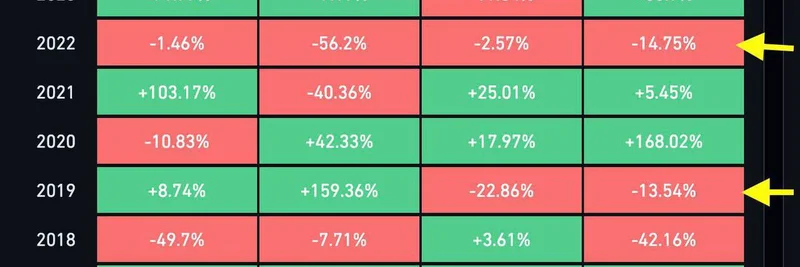Back in 2019, researcher Ittai Abraham shared a insightful tweet linking to his blog post breaking down some key Byzantine Fault Tolerant (BFT) consensus protocols. If you're into blockchain tech—especially the wild world of meme tokens—this stuff is gold. These protocols are the backbone of many distributed systems, ensuring everything runs smoothly even when some nodes go rogue. Let's unpack what Ittai highlighted in his original tweet and blog post, making it easy to grasp for anyone building or trading in the crypto space.
Why BFT Matters for Meme Tokens
Byzantine Fault Tolerance, or BFT, is all about making sure a network agrees on transactions even if up to a third of the nodes are faulty or malicious. Think of it as the tech that keeps blockchains like Cosmos (using Tendermint) or emerging ones inspired by HotStuff from falling apart. For meme tokens, which often launch on fast, scalable chains, understanding these can help you spot which projects have solid tech under the hype.
Ittai compares four heavy hitters: PBFT (the classic), Tendermint (modern and gossip-based), SBFT (scalable twist on PBFT), and HotStuff (linear and responsive). No single one wins everything—it's all trade-offs in latency, communication, and how they handle leader changes.
The Big Picture Similarities
Before diving into differences, these protocols are more alike than not:
They're all designed for state machine replication (SMR), basically syncing a bunch of computers to process commands in the same order, even with bad actors.
They operate in a partial synchrony model, meaning they stay safe always and eventually make progress after network issues settle (post-GST, or Global Stabilization Time).
Each tolerates up to f faulty nodes out of 3f+1 total, using a leader-based approach where leaders get swapped if things go south.
This foundation is why they're staples in blockchain design, from enterprise setups to public chains hosting your favorite dog-themed tokens.
Rotating vs. Stable Leaders: A Conceptual Split
One big divide is how they handle leaders—the node proposing the next block.
Protocols like PBFT and SBFT stick with stable leaders: Keep the same one until a problem pops up, which can mean one leader handles many blocks. This boosts efficiency when things are smooth but risks sneaky malice, like biasing transaction order in a block.
On the flip side, Tendermint and HotStuff rotate leaders regularly, often after each block attempt. This builds in fairness—harder for one bad leader to dominate—but adds overhead since view changes (leader swaps) are routine.
You could tweak any to mimic the other style, but it's a choice between stability for performance or rotation for fairness. In meme token land, where fairness can prevent rug pulls or frontrunning, rotation might appeal more.
Normal-Case Operations: Communication and Efficiency
When everything's humming (honest leader, post-GST), how do they commit blocks?
PBFT uses all-to-all messaging, leading to O(n²) communication—quadratic growth with nodes, which can bog down large networks.
Tendermint gossips messages (O(n log n) typically, but optimizable to O(n)), while SBFT and HotStuff go linear O(n) right out of the gate. Linear means better scalability, crucial for chains handling meme token frenzy without choking.
View-Change Mechanics: Handling Leader Swaps
View changes kick in when leaders fail or rotate. This is where trade-offs shine.
PBFT and SBFT need O(n²) communication for view changes—not ideal if frequent.
Tendermint innovates with O(n) view changes, super efficient since rotations are normal. HotStuff matches that linearity.
But responsiveness matters: Can it adapt to actual network speeds without fixed timeouts? PBFT, SBFT, and HotStuff are responsive—progress at network pace. Tendermint needs timeouts in view changes, potentially slowing things if the network's faster than expected. A malicious actor could exploit no timeouts to halt progress entirely.
For meme tokens on volatile networks, responsiveness could mean quicker confirmations during pumps.
Here's a quick comparison table from the post:
| Protocol | Best-case Latency | Normal-case Communication | View-Change Communication | View-Change Responsive |
|---|---|---|---|---|
| PBFT | 2 | O(n²) | O(n²) | Yes |
| Tendermint | 2 | O(n) (*) | O(n) | No |
| SBFT | 1 | O(n) | O(n²) | Yes |
| HotStuff | 3 | O(n) | O(n) | Yes |
Latency here is round-trips to commit a transaction. SBFT's 1-round best-case is snappy, but HotStuff's 3 trades for better view-change efficiency.
Boosting Throughput: Pipelining and Concurrency
To crank up blocks per second:
PBFT and SBFT use concurrency—a leader works on multiple slots at once, like TCP windows, boosting throughput empirically.
HotStuff's basic version is sequential, but Chained HotStuff pipelines messages (each carrying info for multiple slots), hitting amortized 1 block per round. It simplifies code too, echoing ideas from Casper.
These aren't locked to protocols; you could pipeline PBFT or window HotStuff. But execution (actually running transactions) often bottlenecks after commit optimization—key for meme token chains with high TPS needs.
Randomness and Future Tweaks
All are deterministic, but adding randomness (like in VABA or LibraBFT) can cut expected rounds, handling async networks or adaptive attacks better. Worth watching for next-gen meme platforms.
Wrapping Up: Trade-Offs for Your Blockchain Journey
Ittai's breakdown shows no perfect protocol—pick based on needs: low latency (SBFT), responsive linear changes (HotStuff), or balanced classics (PBFT, Tendermint). For meme token devs or investors, this knowledge helps evaluate chain tech. Cosmos uses Tendermint for its hubs, while HotStuff influences newer ones like Aptos.
If you're building on blockchain, dig into these for robust designs. Check the full blog for deeper theory—it's a must-read for staying ahead in crypto.




